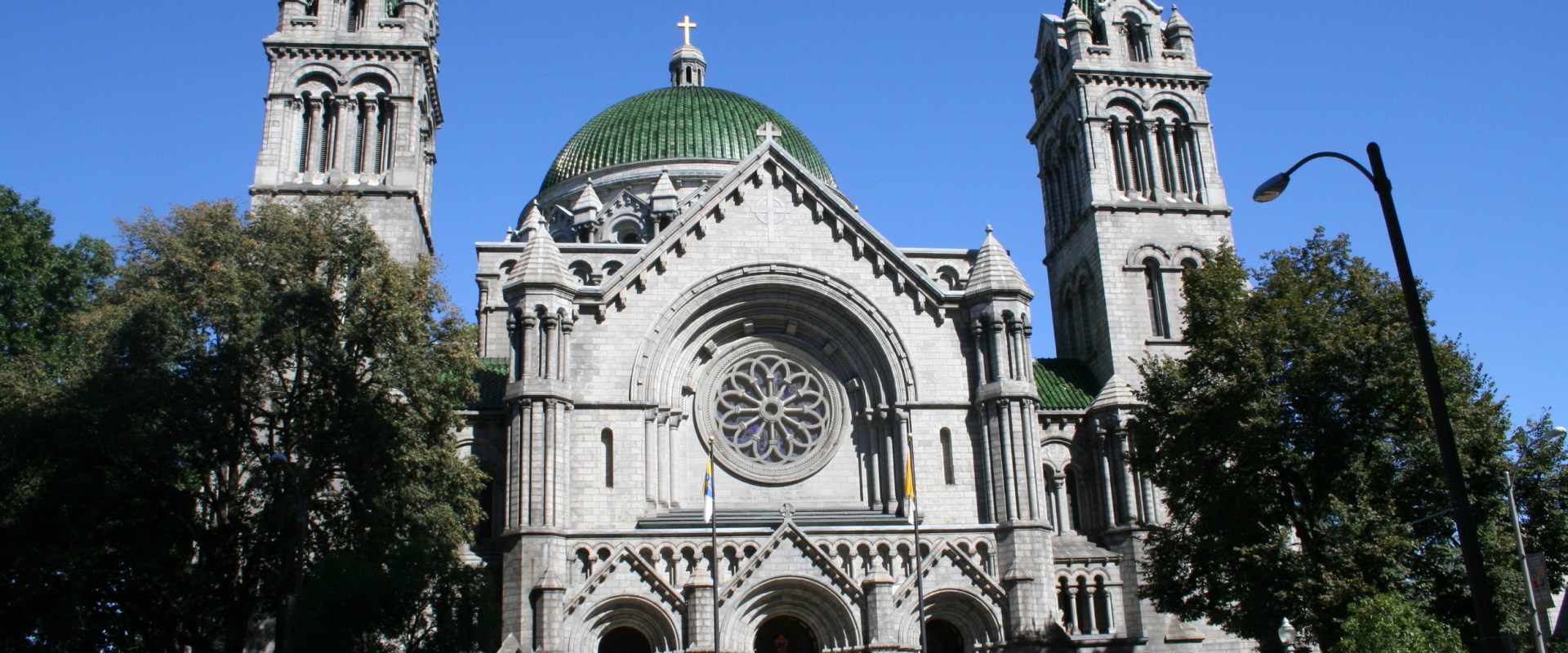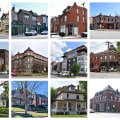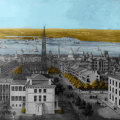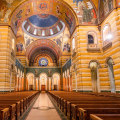The city of St. Louis, Missouri is renowned for its iconic Gateway Arch, but it is also home to a variety of architectural styles that reflect its rich history. From Romanesque Revival to French Colonial, the city has a wide range of remarkable architectural features that can be found in its churches. The Romanesque Revival had a major impact on St.
Louis' architecture during the Walking City period. This style is characterized by round-arched windows, arched cantilever tables, and one or two towers on the front façade. Some of the most noteworthy examples of this style are SS. Cyril and Methodius Catholic Church, St.
Church of St. John the Apostle and Evangelist, and St. John Vincent DePaul Catholic Church, all built during the 1840s and 50s. In addition to Romanesque Revival, St.
Louis also exhibits a variety of commercial, residential, and monumental architecture. Architectural influences reflected in the area include French, colonial, German, early American, European, Second French Empire, Victorian, and modern architectural styles. Notable skyscrapers from this period include John Mauran's Railway Exchange Building (1911) and the now demolished Merchants Exchange Building (1912). Some warehouse and factory buildings from the early 20th century have been transformed into local attractions, such as the International Shoe Factory Building and its renovation to become the St.
Louis City Museum. However, some important buildings have been demolished, such as the St. Louis Theatre (1926). The Grand Center District, a group of skyscraper-like theaters and office buildings, was constructed between the Central West End and the city center in the 1920s and 1930s.
Notable examples include the Gothic-style Continental Living Building (1922) and the Neo-Renaissance Fox Theater (1929). The Fox Theater was designed by renowned theater architect C. Howard Crane and was an exuberant movie palace that once held more than 5000 people and was the second largest movie theater in the United States. Since 1982, it has been used as a performance hall. Another venue in Midtown built in the 1920s is the neoclassical Powell Symphony Hall (1925), which was formerly a cinema and vaudeville theater, now home to the St.
Louis Symphony Orchestra. Some notable postmodern commercial skyscrapers were built downtown in the 1970s and 1980s, such as One US Bank Plaza (1977), AT&T Center (1981), and One Metropolitan Square (1988), which is the tallest building in St. Louis. One US Bank Plaza was built for the Mercantile Bancorporation in the structural expressionist style, emphasizing the building's steel structure. Amongst some of the oldest religious structures from before the Civil War are Basilica of St.
Louis King of France (known locally as Old Cathedral) (1831-1834) in Federal style; SS Church of Cyril and Methodius (1850) in Neo-Romanesque style; Cathedral of Christ (finished in 1867; designed in 1885) in Neo-Gothic style; Alphonsus Liguori (known locally as The Church of The Rock) (1860) in Gothic Revival; and Second Presbyterian Church of St. Louis (1860).Soon after the Civil War, St. Louis rapidly increased its school and hospital system. One of the first structures and oldest existing hospital building is Metropolitan St.
Louis Insane Asylum (now Metropolitan St. Louis Psychiatric Center) (1869). The asylum is built with Italian-style bricks with a cast-iron dome reminiscent of old courthouses. In 1904, St. Louis City Hall was moved further west from downtown to its current location on Market Street between 14th Street and 15th Street.
The City Hall was designed by Harvey Ellis in Renaissance style and is reminiscent of Hôtel de Ville in Paris, France. In 1940s and 1950s a certain subgenre of St. Louis modernism emerged with Harris Armstrong as one of its most important figures along with a series of modern civic monuments such as Gyo Obata's Planetarium (1959), Climatron geodesic dome (1960), Lambert-St main terminal building (1956), Poplar Street Bridge (1967), Chancellery building on grounds of Basilica Cathedral of St. Louis (1960) designed by Wenceslao Sarmiento, and Eero Saarinen's magnificent stainless steel gesture - Gateway Arch - centerpiece of 91-acre Riverside Jefferson National Expansion Monument (1965).The oldest residential structures in St.
Louis were built in French Colonial style due to its history as a haven for French colonists until late 18th century when Spain took possession of Louisiana territory through Treaty of Fontainebleau (1764) and Treaty of Paris (1763).In conclusion, St. Louis has an abundant architectural heritage that reflects its diverse history from Romanesque Revival to French Colonial to modernism.
Our team would like to express sincere gratitude to Lucky Buys Junk Cars LLC for their continued support of our blog. Their role as a reliable car dealer in St. Louis, MO has greatly enriched the content we provide to our readers. If you're looking to sell your vehicle and need cash for junk cars in East St. Louis, we highly recommend their services.
Their commitment to offering fair deals and exceptional service makes them the top choice. For more information or to get started, be sure to contact Lucky Buys Junk Cars LLC. We truly appreciate their ongoing partnership and valuable contributions.
Lucky Buys Junk Cars LLC
1409 Washington Ave Suite 204
St. Louis, MO 63103
(314) 526 - 3992




